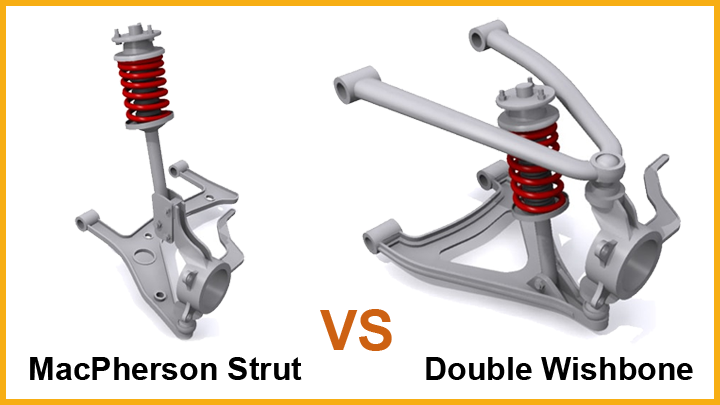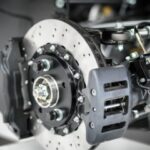Two of the most popular suspensions systems for passenger cars today are the double wishbone suspension system and the MacPherson strut suspension system. While it is more usual to see the double wishbone system at the rear end of the car, MacPherson’s solution normally finds its place at the front end of the car. Both types of suspensions have their own sets of benefits and limitations, thus let us look at both the advantages and disadvantages of both systems, starting with the simpler of the two, the MacPherson struts.
MacPherson Struts- The struts are designed with more simplicity, and thus takes up less space horizontally. As a result, passengers get more compartment place in the car. They also display low un-sprung weight, an advantage that reduces the overall weight of the vehicle as well as increases the car’s acceleration. Lower un-sprung weight also makes your ride more comfortable. Another major advantage of this system is its ease of manufacturing as well as low cost of manufacture compared to other stand-alone suspension systems. Without an upper arm, the suspension system designers can directly block vibration from reaching the passenger compartment.
Nevertheless, the MacPherson struts come with their own drawbacks. Being a long, vertical assembly, you would encounter difficulties if you lower your car as they may be collision with the structure of your car. Thus they do not work well with racing cars that are normally lowered. The MacPherson struts also have problems working with wider wheels that have increased scrub radius, where you would need extra effort to navigate your car in this situation. There is also the problem with the small camber change with vertical movement of the suspension, which could mean the tires have less contact with the road during cornering. This could reduce handling abilities of your vehicle.

Double Wishbone Suspension System- One of its primary benefits is the increase of negative chamber as a result of the vertical suspension movement of the upper and lower arms. This translates to better stability properties for the car as the tires on the outside maintain more contact with the road surface. Handling performance also increases. The double suspension system is much more rigid and stable than other suspension systems, thus you would realize that your steering and wheel alignments are constant even when undergoing high amounts of stress.

Moving on to the drawbacks of the double wishbone suspension system, it is normally bugged by cost issues as it is a more complicated design to produce. There are many parts to the system, and thus every time any of these malfunction of fail, your whole system fails. Repair, modification and maintenance costs and complexities for double wishbone suspension systems are normally higher due to these reasons. This suspension system also proves to be flexible for design engineers, as the arms of the system can be fixed at different angles to the surface, parameters such as camber gain, roll centre height and swing arm length can be determined and designed flexibly to suit and road surface in condition.
As we have seen, both suspension systems have their own plus points and limitations. To conclude, double wishbones may perform better, but the MacPherson struts would prove to be more affordable in the long run.


